Peanuts: We have seen white mold, in small quantities, in Tift County. Be vigilant and aggressive with your sprays. There has been a good bit of false white mold scattered around. Pay close attention to the difference. False white mold does not harm the plant; in fact, the real damage false white mold can cause is that you spend money unnecessarily fighting it. False white mold is most often found in conservation tillage where the white fungal growth covers both the limbs of the peanut crop and the associated crop debris. Early in its growth and development, the fungus appears nearly identical to the white mold/stem rot pathogen. However, as false white mold ages, it begins to turn a yellow-orange color and takes on a toothed or hairy appearance. False white mold never produces BB-sized sclerotia as the real white mold does. You can scrape the false white mold off and the stem underneath is not harmed. It also looks “toothy” and sometimes yellowed.
Tips for white mold:
- Spraying the peanut field at night or in the darkness of early morning when the leaves are folded is a great way to get the fungicide where it needs to be (the crown of the plant).
- Use anticipated rain events and irrigation to move the fungicide to the limbs and the crown of the plant.
- No program will stop all initial “hits” of white mold where a plant here, there and across the field wilts but a fungicide program must prevent the disease from spreading within or down the row.
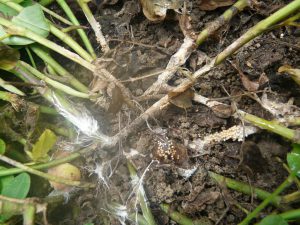
White Mold-notice the BB-sized sclerotia
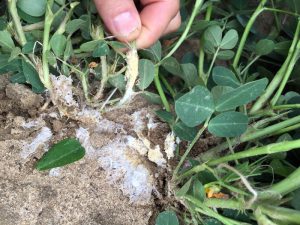
False White Mold- it looks stringy and “toothy”
Tomato Spotted Wilt (TSWV) has been at an unusually high level this year. I have not seen any leaf spot yet but that doesn’t mean that it is not out there or it isn’t coming.
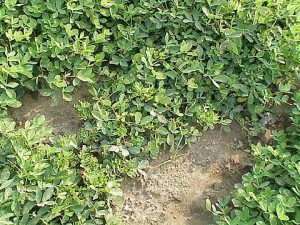
TSWV stunting peanuts
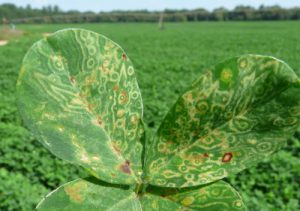
TSWV- Notice the discoloration and rings on the leaves
Cotton: Target spot has been slowly developing but keep a keen eye for it. Be careful when looking for target spot as it is often confused with Stemphyllium Leaf Spot. Areolate mildew is also a concern that needs to be monitored. Both Target Spot and Areolate Mildew can cause early defoliation.
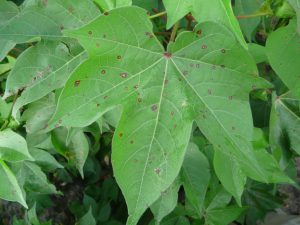
Stemphylluim Leaf Spot- small circles with an ashy center. Cotton leaf looks like it may have been hit with some #8 birdshot
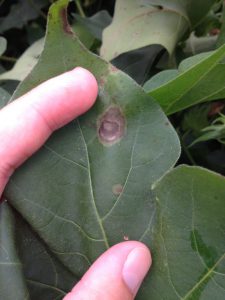
Target Spot- darker brown (chocolate colored) circle with concentric rings. Spots are usually larger and begin in the lower canopy.
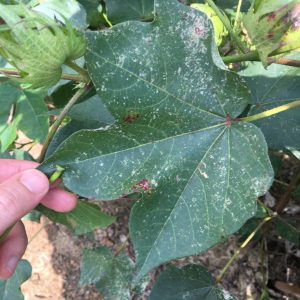
Areolate Mildew on cotton leaf.
If you have any questions please give us a call.